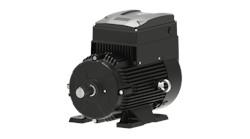Field service providers quite possibly offer the highest degree of customer contact in many industrial companies. For some, this would even be equal to the sales force that lands the application contract. This customer contact opportunity aligns with an organization’s strategic investment in improving the effectiveness of its field service management.
The role of technology continues to increase as service providers seek higher productivity and clear value differentiation in the marketplace. Water treatment companies are keen to find technology solutions that enable them to deliver more value to the customers with the bonus of optimizing field service management efficiency and adding useful market intelligence. Key phrases like value, return on investment (ROI), and key performance indicators (KPIs) have been the standard in the industry for more than two decades with customers and providers determining success and failure. For more than a decade, these same tools have been used internally to drive value in the same manner using six sigma, lean engineering and business enterprise groups dedicated to cutting across the business to optimize operating efficiency.
Water treatment companies are keen to find technology solutions that enable them to deliver more value to the customers with the bonus of optimizing field service management efficiency and adding useful market intelligence.
Water treatment companies have a high degree of field service demand to deliver products, services and new technology to their customers. At the same time, the pressure to deliver today’s technology, as well as the next generation’s, without significantly affecting program cost is placed on all levels of the organization. Enter the technology partner with a service delivery platform that can provide the service plan today and grow with technology requirements of tomorrow.
Underneath the waterline, companies in the water treatment industry face challenges with scheduling service calls, connectivity to field for work order and asset management, parts and service time consumed, to mention a few. With many companies investing heavily in customer relationship management (CRM) tools to enable the sales, marketing and business intelligence, the field service component in this solution often leaves an operational gap that creates inefficiency. These variabilities can be even greater if a subcontracted workforce is used to deliver service and equipment.
The operational challenges parallel the trend of internal business growth (lean six sigma and enterprise excellence, for example) that focus on these inefficiencies. The best corrective action can be quite challenging to identify as well. Business leaders are faced with multiple CRM and enterprise resource planning (ERP) systems from acquisitions and mergers, possibly an array of applications and service formats, and a directive to provide a solution that can incorporate future changes to business demands.
With these difficulties and challenges, what can the operations manager or the project manager do to improve the situation? Start with the end in mind: a vision of the work’s result in action (e.g., a service engineer in the field executing a service model). Some initial critical questions include:
- How do you schedule and communicate the work request to the field service engineer?
- What needs to happen so that the event can proceed (safety checklist, equipment, etc.)?
- What tools of the trade and documentation are needed to complete the request?
- What are the objectives, and what process steps are needed to execute the work?
- What are the customer and business requirements that need to be accomplished? How will they be confirmed and communicated?
- How will the completed work task be reconciled with the ERP system, and how is this communicated to the customer?
Can the operations team and field service engineer complete all of the aforementioned questions in the current operating system without email, phone calls or spreadsheets? Do you need to use more than one tool or system to manage the workflow? If the answers are no and yes respectively, there is still room to gain efficiency and decrease costs for added value out of the service process.
Another consideration with the end use in mind is the functional interface used to manage the process. Some key interface-related heuristics identified to enhance the user acceptance and functionality of field service management (FSM) are:
- The interface must be designed for outdoor usage and fit-for-purpose when it comes to battery life and screen reflection.
- Technicians prefer a variety of input options: data, photos, voice and video.
- Technicians want to understand site history, context of job task and where their work fits into the entire process.
- Easy access to support documents in the field improves technicians’ decision-making processes.
- The FSM tool needs to be fully functional offline for longer than the longest possible job.
- The FSM tool needs to reflect the technician’s workflow versus the back-office processes.
- The FSM tool needs to allow for scheduling changes based on the needs of the customer and business.
Field service technicians want to understand site history, context of job task and where their work fits into the entire process.
This approach is similar to standard project management and problem-solving techniques and leads many operations and project managers to the solution that fits today’s requirements.
That lofty business directive to incorporate future business demands can elude many solutions. This may occur because envisioning future needs and the path to achieve the best results may come easier for the core activities in the business than it is for technology-supporting activities. Considering technology partnerships that complement the organization’s philosophy on innovation, value delivery and growth may be the way to open paths to the “enabled” technology, as opposed to finding a piece of technology that can enable workflow today.
Tom Gent is vice president of business development at Retriever Communications for the Midwest and Northeast markets. He is an industry veteran with more than 20 years of experience in sales, asset management, business operations and manufacturing. Gent focuses his expertise on supporting service providers’ efforts to enhance environmental compliance, safety, and remote worker management in water treatment and industrial workplaces.



